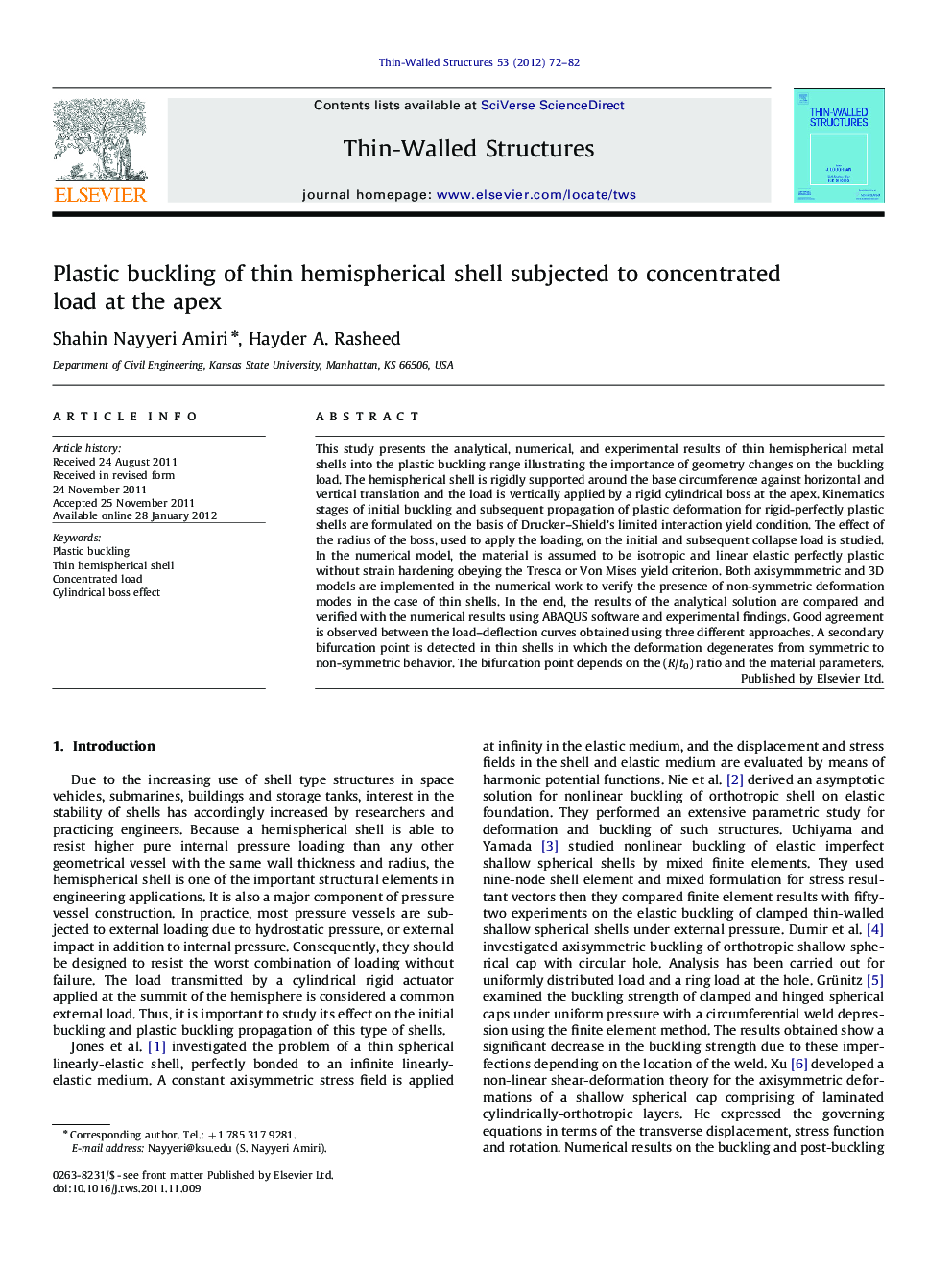| Article ID | Journal | Published Year | Pages | File Type |
|---|---|---|---|---|
| 309402 | Thin-Walled Structures | 2012 | 11 Pages |
This study presents the analytical, numerical, and experimental results of thin hemispherical metal shells into the plastic buckling range illustrating the importance of geometry changes on the buckling load. The hemispherical shell is rigidly supported around the base circumference against horizontal and vertical translation and the load is vertically applied by a rigid cylindrical boss at the apex. Kinematics stages of initial buckling and subsequent propagation of plastic deformation for rigid-perfectly plastic shells are formulated on the basis of Drucker–Shield's limited interaction yield condition. The effect of the radius of the boss, used to apply the loading, on the initial and subsequent collapse load is studied. In the numerical model, the material is assumed to be isotropic and linear elastic perfectly plastic without strain hardening obeying the Tresca or Von Mises yield criterion. Both axisymmmetric and 3D models are implemented in the numerical work to verify the presence of non-symmetric deformation modes in the case of thin shells. In the end, the results of the analytical solution are compared and verified with the numerical results using ABAQUS software and experimental findings. Good agreement is observed between the load–deflection curves obtained using three different approaches. A secondary bifurcation point is detected in thin shells in which the deformation degenerates from symmetric to non-symmetric behavior. The bifurcation point depends on the (R/t0) ratio and the material parameters.
► This study presents post buckling behavior of thin hemispherical metal shells. ► It illustrates the importance of geometry changes on the buckling load as well. ► Both axisymmmetric and 3D models are implemented in the numerical work. ► The results of the analytical solution are compared with the numerical and experimental findings. ► Good agreement is observed between the load–deflection curves obtained using three approaches.
